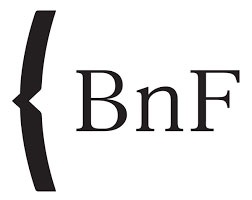Art et Mémoire
-
Réalisé par Elsa Cayo • Écrit par Stéphane Druais, Elsa Cayo, François Le Bayon, Chantal Soyer
-
France • 1997 • 26 minutes • Couleur
- Réalisation :
Elsa Cayo - Écriture :
Elsa Cayo, Stéphane Druais, François Le Bayon, Chantal Soyer
- Production (structure) :
Lieurac Productions - Coproduction :
Grand Canal - Diffuseur :
La Cinquième - Participation :
CNC, DAP - Délégation aux Arts Plastiques, DDF - Délégation au Développement et aux Formations - Ayant droit :
Lieurac Productions
- N° ISAN :
non renseigné
Résumé
À Kassel, lors de la Documenta V, Harald Szeemann organisa une section "musées personnels" où il invitait des artistes à explorer le rôle de la mémoire individuelle et collective dans la définition de l'identité. Christian Boltanski évoque le passé et les images affectives qui s'y rapportent à partir de matériaux aussi banals que des vêtements usagés ("Réserve", 1989) ou de photographies qui dressent l'inventaire des gestes du quotidien. La photographie rend compte de l'individu et de son identité, constituée d'une accumulation de "petites mémoires". L'art, la vie, le passé et sa mémoire sont indissociables dans l'œuvre de Louise Bourgeois : les événements de sa petite enfance en constituent le moteur et le sujet. Ainsi, le souvenir traumatisant de la relation que son père entretint avec sa maîtresse est à l'origine de "The Destruction of the Father" (1970). L'acte créateur devient le moyen d'exorciser les peurs suscitées par les conflits familiaux qui ont troublé son enfance. (Annick Spay
In Kassel, during Documenta V, Harald Szeemann organised a "personal museums" section in which he invited artists to explore the role of individual and collective memory in the definition of identity. Christian Boltanski evokes the past and the emotional pictures that are connected with it using such banal materials as used clothing ("Réserve", 1989) or photographs that make an inventory of everyday gestures. The photograph recounts the individual and his identity, made of an accumulation of "little memories". Art, life, the past and the memory of it are indissociable in the work of Louise Bourgeois : the events of her early childhood are the driving force and the subject of it. So the traumatic memory of the relation that her father had with his mistress is the basis for "The Destruction of the Father" (1970). The creative act becomes the means of exorcising the fears provoked by the family conflicts that disturbed her childhood. (Annick Spay)
Collection
Comment avoir accès au film ?
-
Édition DVD
- Il n'existe pas d'édition DVD à notre connaissance
-
Accès VOD
- Il n'existe pas d'accès en VOD à notre connaissance
- Diffusion non commerciale / Consultation
